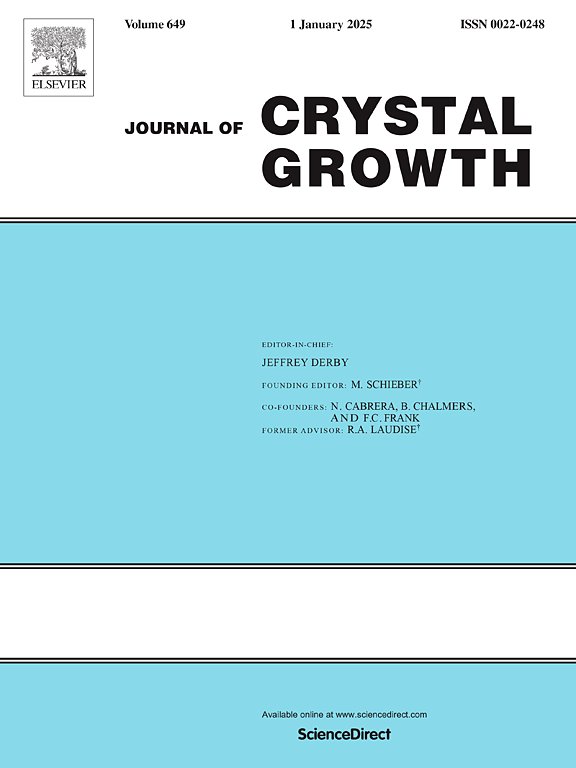揭示晶体硅生长过程中 W 型界面和过冷熔体的条件:智能方法
IF 1.7
4区 材料科学
Q3 CRYSTALLOGRAPHY
引用次数: 0
摘要
在铜铟镓硒的生长过程中,凹形和 W 形固液界面以及过冷熔体是导致晶体质量下降的主要因素,尤其是结构损失、缺陷产生、掺杂剂分布不均匀以及晶体扭曲,因此避免这些因素至关重要。我们采用分类树机器学习方法,研究了 15 个工艺和熔炉设计参数及其临界范围在不同尺度、不同工艺条件下对形成各种类型 W 型界面和欠冷熔体的重要性,包括有维和无维参数。此外,还使用符号回归法根据上述输入预测最小熔体温度。训练数据通过 CFD 建模获得。综合输出的分类树将格拉肖夫数、晶体雷诺数和斯特凡数以及硅凝固的百分比确定为最重要的输入。对过冷熔体温度的符号回归突出表明,坩埚直径、拉速和底部加热器的功率是关键参数。本文章由计算机程序翻译,如有差异,请以英文原文为准。
Unraveling conditions for W-shaped interface and undercooled melts in Cz-Si growth: A smart approach
In Cz-Si growth, concave and W-shaped solid–liquid interfaces and undercooled melts are primary contributors to the degradation of crystal quality, particularly structure loss, defect generation, non-uniform dopant distribution, and crystal twisting, making their avoidance crucial. We employed a classification tree machine learning approach to investigate the importance of 15 process and furnace design parameters and their critical ranges for the formation of various types of W-shaped interfaces and undercooled melts at different scales, both in dimensional and dimensionless forms, and across a wide range of process conditions. Moreover, symbolic regression was used to predict minimal melt temperature based on the aforementioned inputs. Training data were obtained by CFD modeling. The classification tree for combined output identified the Grashof, Reynolds for crystal, and Stefan numbers, along with the percentage of silicon solidified, as the most decisive inputs. Symbolic regression for the temperature of undercooled melt highlighted crucible diameter, pulling rate, and the power of the bottom heater as key parameters.
求助全文
通过发布文献求助,成功后即可免费获取论文全文。
去求助
来源期刊

Journal of Crystal Growth
化学-晶体学
CiteScore
3.60
自引率
11.10%
发文量
373
审稿时长
65 days
期刊介绍:
The journal offers a common reference and publication source for workers engaged in research on the experimental and theoretical aspects of crystal growth and its applications, e.g. in devices. Experimental and theoretical contributions are published in the following fields: theory of nucleation and growth, molecular kinetics and transport phenomena, crystallization in viscous media such as polymers and glasses; crystal growth of metals, minerals, semiconductors, superconductors, magnetics, inorganic, organic and biological substances in bulk or as thin films; molecular beam epitaxy, chemical vapor deposition, growth of III-V and II-VI and other semiconductors; characterization of single crystals by physical and chemical methods; apparatus, instrumentation and techniques for crystal growth, and purification methods; multilayer heterostructures and their characterisation with an emphasis on crystal growth and epitaxial aspects of electronic materials. A special feature of the journal is the periodic inclusion of proceedings of symposia and conferences on relevant aspects of crystal growth.
 求助内容:
求助内容: 应助结果提醒方式:
应助结果提醒方式:


